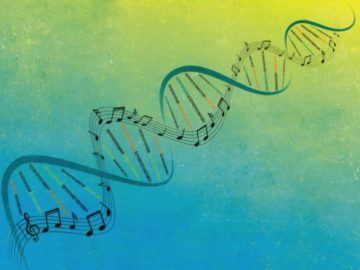Steve Nadis in Harvard Magazine:
 DIGITAL-DATA PRODUCTION is expanding so fast that, within two decades, storing it in flash-drive memory chips could consume 10 to 100 times the anticipated supply of microchip-grade silicon. With new ways of storing information desperately needed, Winthrop professor of genetics George Church is turning to one of the oldest means of doing so: the DNA molecule, which has been replicating and mutating on Earth for three and a half billion years. By 2025, accumulated global data is expected to reach 175 billion trillion bytes—all of which could, in principle, be contained in less than 180 pounds of DNA, housed within a 15-gallon drum. DNA stores information in a “modern” way, explains Church, who heads the synthetic biology group at Harvard’s Wyss Institute for Biologically Inspired Engineering (see “Engineering Life,” January-February 2020, page 37, for more about synthetic biology). Digital information storage, he explains, “is based on just two numbers, 0s and 1s, and DNA is analogous.” Its code has just four letters: A (adenine), T (thymine), C (cytosine) and G (guanine)—the bases or nucleotides comprising the rungs of DNA’s double helix-shaped ladder, which can be arranged in whatever order scientists choose.
DIGITAL-DATA PRODUCTION is expanding so fast that, within two decades, storing it in flash-drive memory chips could consume 10 to 100 times the anticipated supply of microchip-grade silicon. With new ways of storing information desperately needed, Winthrop professor of genetics George Church is turning to one of the oldest means of doing so: the DNA molecule, which has been replicating and mutating on Earth for three and a half billion years. By 2025, accumulated global data is expected to reach 175 billion trillion bytes—all of which could, in principle, be contained in less than 180 pounds of DNA, housed within a 15-gallon drum. DNA stores information in a “modern” way, explains Church, who heads the synthetic biology group at Harvard’s Wyss Institute for Biologically Inspired Engineering (see “Engineering Life,” January-February 2020, page 37, for more about synthetic biology). Digital information storage, he explains, “is based on just two numbers, 0s and 1s, and DNA is analogous.” Its code has just four letters: A (adenine), T (thymine), C (cytosine) and G (guanine)—the bases or nucleotides comprising the rungs of DNA’s double helix-shaped ladder, which can be arranged in whatever order scientists choose.
In an October 2020 paper in Nature Communications, Church and colleagues described an advance that brings DNA information storage closer to commercial feasibility. They showed for the first time that DNA could be synthesized, and information thereby encoded, in an enzyme-facilitated process controlled by light. The team also demonstrated another first: the use of enzymes to achieve parallel synthesis of multiple DNA strands. They pulled two measures of music from a Super Mario Brothers video game, digitized it, converted it to a DNA code, and synthesized it. The DNA was then sequenced to decipher its code, redigitized, and converted back to a musical format. The point was to test a new approach to synthesis involving both enzymes and light. The first of these steps was demonstrated in 2019 when Church’s group showed that terminal deoxynucleotidyl transferase (TdT)—an enzyme found in immune cells—could be used for DNA synthesis and information storage. TdT works well, says Wyss staff scientist Daniel Wiegand, “because its only job is to find the end of a DNA chain and add a base to it.”
More here.
